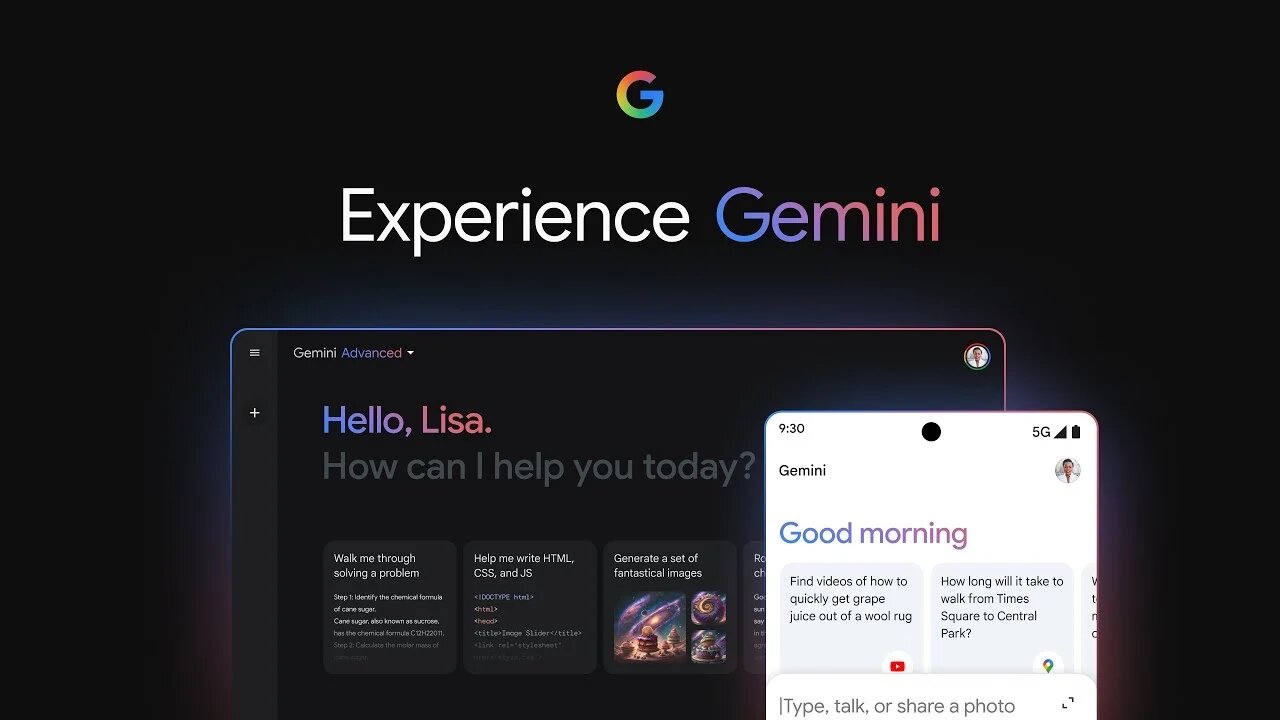Google's Gemini AI is transforming the field of UX design by introducing cutting-edge technologies that make the design process faster, smarter, and more user-centered. With its ability to automate repetitive tasks, personalize experiences, and provide valuable insights, Gemini AI is reshaping the way designers create engaging digital experiences.
Here's how it's making a big impact:
1. Automating Design Tasks
Gemini AI accelerates the design process by automating time-consuming tasks like wireframing, prototyping, and layout suggestions. This frees up designers to focus on more complex creative and strategic challenges.
Wireframe generation: Quickly generates wireframes from design briefs.
Prototyping: Provides design suggestions based on successful user patterns.
2. Personalizing User Experiences
Gemini AI analyzes user data to deliver tailored experiences. By understanding user preferences and behavior, it ensures that each interaction feels uniquely relevant, boosting engagement and satisfaction.
Custom recommendations: Adjusts content and design elements based on user data.
Dynamic interfaces: Personalizes designs for different user segments.
3. Optimizing User Testing
Traditional user testing can be slow and resource-intensive, but Gemini AI speeds up this process. It collects real-time feedback from user interactions, allowing designers to make data-driven improvements quickly.
Behavior analysis: Tracks user actions and provides insights into friction points.
Quick iterations: Allows for rapid design refinements based on real-time data.
4. Ensuring Accessibility
Accessibility is a top priority in design, and Gemini AI helps ensure that digital products are inclusive. It scans designs for accessibility issues, ensuring they are usable by people with disabilities.
Color contrast checks: Identifies potential accessibility issues related to visual design.
Compliance alerts: Highlights design elements that may not meet accessibility standards.
5. Predicting Future Design Trends
Gemini AI uses data analytics to predict emerging design trends, helping designers stay ahead of the curve. This forward-thinking approach ensures that designs remain fresh, innovative, and aligned with user preferences.
Trend analysis: Identifies popular design elements and trends based on user behavior.
Design forecasting: Suggests design updates based on future trends.
6. Enhancing Team Collaboration
Effective collaboration is essential for successful UX design. Gemini AI fosters seamless teamwork by centralizing data and offering a shared platform where insights are easily accessible to all team members, both technical and non-technical.
Centralized data: Makes design insights available across the team.
Real-time updates: Keeps everyone aligned with ongoing design changes.
7. Augmenting Creativity
Far from replacing creativity, Gemini AI acts as a creative assistant. It offers new ideas and design suggestions based on data-driven insights, allowing designers to explore more innovative and impactful solutions.
Inspiration generation: Suggests creative layouts and elements.
Design exploration: Expands creative possibilities through AI-powered insights.
Conclusion
Google’s Gemini AI is revolutionizing UX design by making processes faster, smarter, and more personalized. From automating repetitive tasks to predicting trends and enhancing collaboration, Gemini AI empowers designers to create better, more engaging experiences for users. As AI technology
continues to evolve, tools like Gemini will continue to shape the future of UX design.

